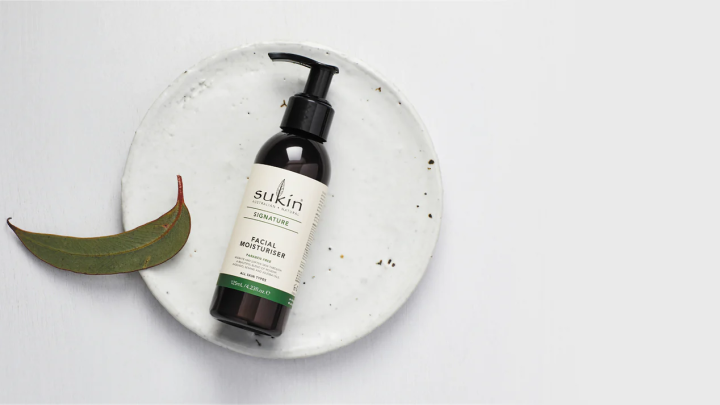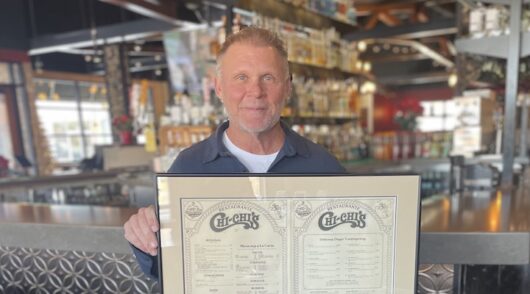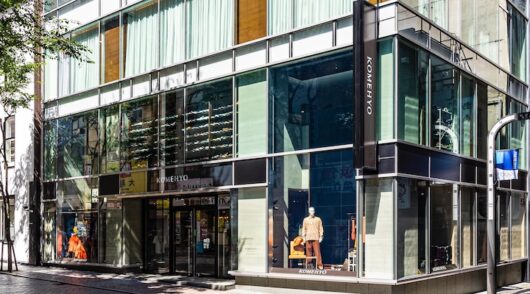To say health and beauty conglomerate BWX has had a difficult few years could be an understatement. After purchasing hundreds of millions of dollars’ worth of successful beauty brands and platforms, the business, which was valued at $860 million five years ago, is now worth about $36 million. If the business can’t get additional capital by the end of the month, it’s rumoured BWX could collapse, taking IP like Sukin, Go-To, Flora & Fauna and Nourished Life with it. The collapse la
pse last week of Purely Byron, which BWX partly owns, is far from the first domino to fall.
Former BWX employees who have spoken to Inside Retail said this downward spiral was largely a bed of BWX’s own making.
How does what was once an incredibly successful beauty business see its share price fall from $7 in 2018 to just 20 cents today? It’s a long story.
Inside Retail contacted BWX for comment, but it declined to comment.
Back in time
The story starts in 2017, when then-CEO and managing director John Humble went on a bit of a buying spree. That year, BWX purchased successful US-based skincare brands Mineral Fusion and Andalou for US$38.4 million and US$80 million, respectively, and acquired Nourished Life, a Sydney-based online retailer focused on natural and organic skincare, for $20 million.
At the time, the acquisitions seemed like a smart move into the growing clean beauty category and e-commerce space, but BWX made key changes to the way the businesses operated within months of buying them.
One former employee, who wished to remain anonymous, told Inside Retail that soon after BWX picked up Andalou it changed the brand’s distribution model, which made it significantly harder to source in Australia.
Nourished Life founder Irene Falcone told Inside Retail that BWX’s general strategy made sense – buy up brands and distribute them through its own retail fronts – up until 2018, when a failed buyout changed the course of the business.
Towards the end of 2017, BWX told investors it was finished with its round of acquisitions and would focus on building out the offer it had assembled. But Humble had a differing viewpoint, reports at the time stated, and wanted to continue purchasing more successful brands.
To that end, in 2018, Humble, backed by financial director Aaron Finlay and Bain Capital, offered to purchase 100 per cent of BWX’s shares in a management buyout. But after four months of due diligence, Bain Capital backed out of the deal.
Both Humble and Finlay had to step aside from their roles during the due diligence process, and eventually exited BWX after the buyout failed. Myles Anceschi, who had formerly held the role of chief operating officer and helped steer the ship during the failed buyout, was promoted to CEO.
During his nine-month stint as chief, Ansceshi saw confidence in the business plummet. The fallout from the failed buyout hurt investors and the business was forced to make several earnings downgrades. In the end, Anceschi left the role in May of 2019, with Blackmores boss Dave Fenlon taking over.
Fenlon stayed in the role for a longer period, around three years, and presided over the company as it started work on a $33.7 million manufacturing facility, largely paid for by a $40 million institutional placement, in which 11.8 million new shares in the business were issued.
Fenlon was also instrumental in the $30 million acquisition of Flora & Fauna, another organic health and beauty marketplace, in 2021.
Flora & Fauna founder Julie Mathers initially said she would stay on at the business, but left nine months after selling. Mathers said she has been disappointed to see Flora & Fauna undergo so many changes under BWX’s leadership.
“Flora & Fauna was a strong performing business a year ago and, in looking at the recently released results, it seems sales have dramatically decreased in part due to the poor stock availability,” Mathers told Inside Retail.
“Other parts of the F&F business appear to have changed, such as the recycling program, and that all can lead to poor customer sentiment when you have very impassioned customers.”
Later in 2021, the business sank another $89 million into purchasing a controlling stake in Zoe Foster Blake’s Go-To Skincare, valuing the brand at $177 million at the time.
The following year, 2022, started with the shock departure of Fenlon and the appointment of COO Rory Gration to the top job. Initially, Fenlon said he would remain on as an non-executive director, but within three months he had stepped down from that position as well, exiting BWX entirely.
By now, the business had invested hundreds of millions of dollars into building out its suite of brands, as well as the completion of its manufacturing facility, and, according to available data, was running dry on capital.
In June 2022, Andrew Forrest’s Tattarang Holdings, which had previously stepped in to help rebuild R.M. Williams, purchased almost 17 per cent of BWX for $30 million – extending a lifeline to BWX. Tattarang’s shares are now worth roughly $5.5 million.
BWX’s financial woes were not over, however. In August, the business requested that its securities be suspended from trade due to issues with its FY22 audited results. It would take around four months, until December 2022, for the business to release its full-year earnings for FY22, as well as corrections to its FY21 and first-half of FY22 results, which revealed a statutory NPAT loss of $335.6 million.
At the same time, the business’ inventory levels had soared and it was having trouble offloading stock it due to a history of ‘channel surfing’, the Sydney Morning Herald reported, meaning BWX sold more stock to retail channels than they were likely to sell, in an effort to shore up its numbers, leaving retailers with a backlog.
It was at this point that BWX chair Ian Campbell, who had overseen the business since 2015, announced his retirement. His replacement, Steven Fisher, stepped into the role in mid-2022.
Once again in 2023, the beginning of a new year marked the beginning of a new CEO’s journey, with Gration seemingly ousted from the business in February, making way for former Coles financial officer Thinus Keeve to take over the role immediately.
Keeve’s entrance landed on the same day that BWX released its first-half results, which painted another dire picture: another $100 million lost in six months, asset valuations slashed and sales plunging.
Now, with a share price roughly 96 per cent lower than it was five years ago, BWX has a new chair, a new CEO, and is looking to rid itself of “non-core assets” in a plan to keep the ship from taking on any more water.
What went wrong?
One of the key reasons for BWX’s troubles in recent years, based on interviews of former staffers, is that it probably overinvested in new brands without properly understanding what made those brands popular. Changes to Andalou’s distribution framework were an early mistake, but there are signs that the business didn’t learn from it. The fact that Nourished Life and Flora & Fauna, two previously successful businesses, are now on the cutting room floor is evidence of that.
Acquisitions are notoriously tricky to get right. Three out of four business acquisitions are deemed a failure by those involved, said the founder of commercial law firm Aspect Legal, Joanna Oakey – and one of the main reasons is mismanagement.
“In many cases, buyers are focused entirely on the purchase price and not on the ongoing running of the business,” Oakey wrote in SmartCompany.
“The buyers of these businesses only last a few years before re-selling at a lower price because the business didn’t match their dream for it.
“[Additionally], buyers want to implement their ideas immediately; however, they are often unaware that rapid change is destructive for staff, customers and prior owners.”
Beyond its acquisitions, BWX’s revolving door of management is another one of the key issues it has faced over the last decade, insiders said, robbing the business of a singular, steady hand with vision.
“The problem was that the management team was not aligned,” an former staffer who chose to remain anonymous told Inside Retail. “That was ultimately the problem. Sukin is a well-known brand with good financial metrics. There’s no reason that business should fail if it’s being managed properly.
“One of the [other] big challenges they’ve got is that they’ve just taken on too much debt, and the business hasn’t been performing as well as it would appear from the outside [for a long time].”
Nourished Life founder Falcone questioned why Sukin was being sold in value chains such as The Reject Shop.
“The consumer wants the product. Just make it and sell it to them. They don’t want to go to The Reject Shop for their beauty products,” she said.
“[They’re] trying to put their fingers in every pie. Just focus, pick a strategy and execute it.”







